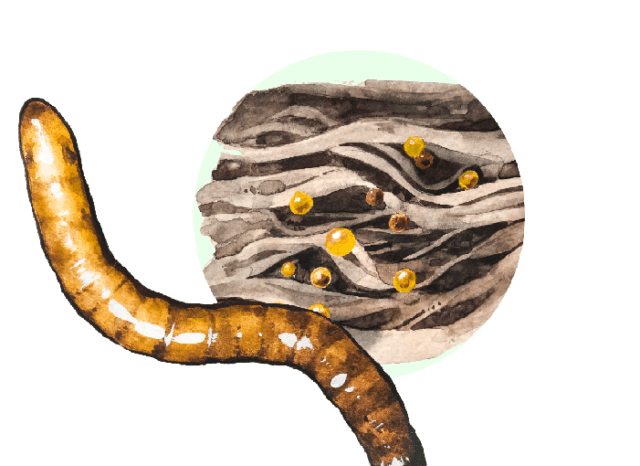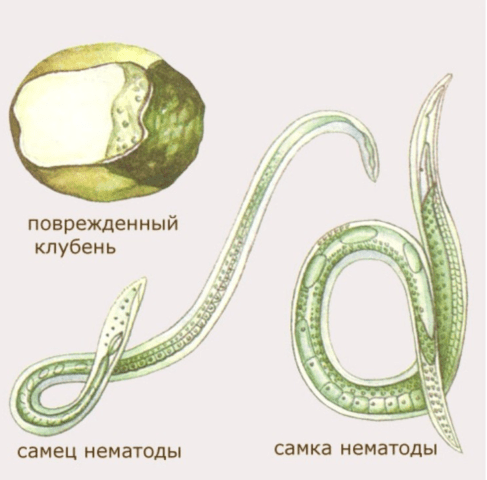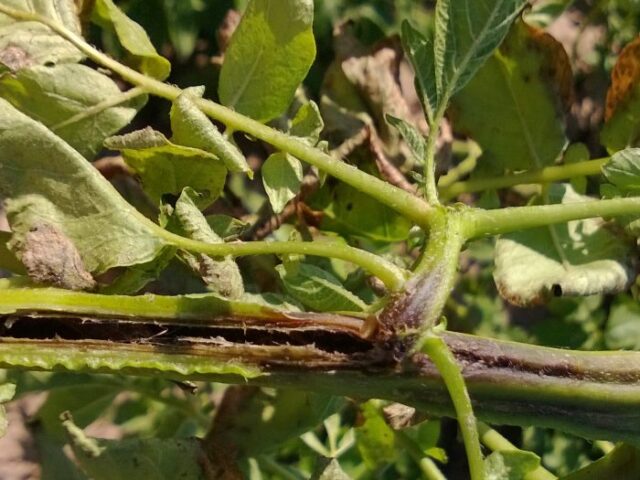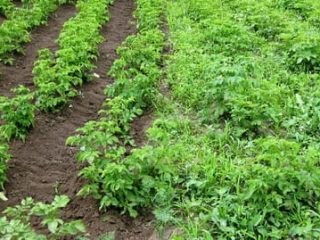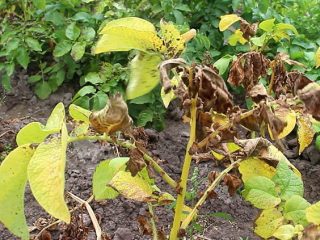Content
The potato nematode is a very dangerous pest that can lead to the loss of 80-90% of the crop. Viable, can survive frost and heat while in the soil. Infection occurs through the soil, as well as by wind and sewage. Chemical and biological agents are used for control.
Description of potato nematode
The potato nematode is a microscopic cyst worm and not an insect. Pests parasitize potatoes, penetrate their root system, and then move freely into tubers, stems and stolons. As a result, plants stop developing and may even die. Affected tubers soften, rot, and lose their taste. They cannot be stored; they are useless for cooking.
Worms have round bodies, the size of which reaches 0.7-1.5 mm. They are somewhat narrowed at the ends and curl; if heated, they straighten out. The surface is annular, individual rings are indistinguishable, since the thickness is only 1 micron. Females may be slightly larger than males.The color is varied - white, brownish, and can be colorless (transparent).
They live mainly in the soil, so they most often affect the underground parts of potatoes. Potato nematodes are dioecious, although previously it was believed that they were hermaphrodites. In fact, worms have males and females.
Males and females mate during the warm season and form cysts containing immature larvae. The danger of a cyst is that it can lie in the soil for 10 or even 20 years if weather conditions are favorable. There are several sources of infection - soil, wastewater and wind.
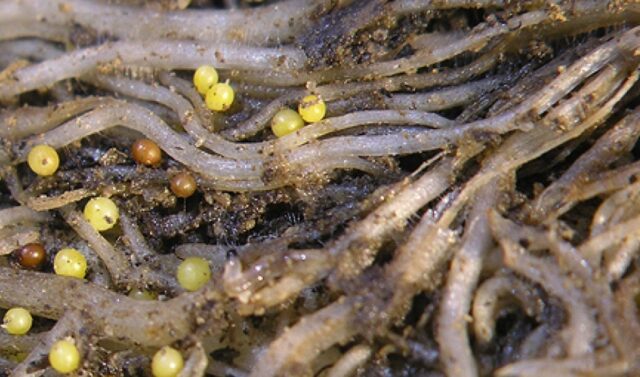
Potato roots affected by nematode
Varieties
20 species of the pest are known and described. The four most common types are:
- Potato golden nematode. It is highly fertile: each cyst contains up to 70 eggs. Moreover, the cysts themselves are very durable and do not collapse even at low temperatures in winter. These formations can be discovered by digging up potato bushes. You can only notice it on close inspection - the balls are microscopic and golden in color.
- Pale potato nematode is similar to the golden one in that it also produces flowers, but they are yellow in color rather than brownish brown. It affects leaf blades, which disrupts photosynthesis. As a result, the leaves begin to wither, which can lead to the death of the entire bush.
- Potato root-knot nematode - a pest that attacks the roots of the plant. The body is white, then becomes almost transparent. Worms lead to the formation of galls - small swellings on the roots. Eggs develop in them, from which larvae subsequently form.
- The potato stem nematode has a body length of about 1.5 mm.The larvae feed on the pulp of stolons and potato tubers, leading to deformation of the stems, which is why the name of the worm is associated. The cyst is viable for five seasons. Its shell does not die even at high temperatures.
Pests are very dangerous, since their appearance leads to significant crop loss, on average about 30%. At the same time, advanced cases are known when about 80% of the tubers died. Another danger of the potato nematode is that it is a carrier of certain viruses. And while it is still possible to deal with worms, it is more difficult to prevent the development of a viral infection.
What does a nematode look like on potatoes?
It is almost impossible to see the pest itself, since it is small in size and lives mainly in the soil. Nematode damage to potatoes can be determined by various external signs. In the case of golden nematode, the main symptoms are:
- Young bushes are clearly stunted in growth.
- The stems are frail, the foliage is small.
- The leaf blades turn yellow ahead of schedule, first from below and then to the upper shoots.
- The roots become weakened; if the damage is severe, additional root layers appear.
- After a week, you can see potato nematode cysts on the roots - at first they are white, then they become bright yellow, and then red-brown.
- The tubers become noticeably smaller and fewer are formed than usual.
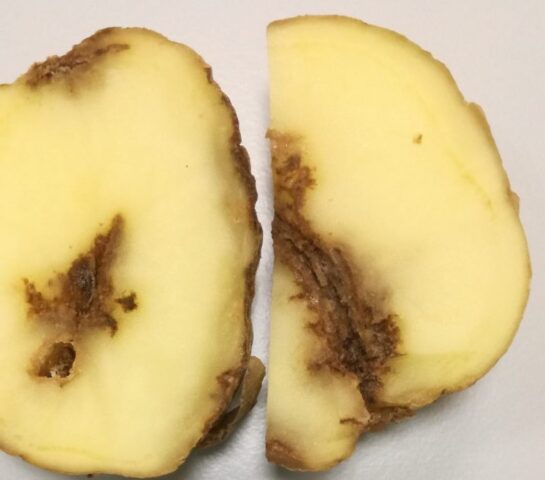
A tuber damaged by a pest is not used for food.
If the cause of the lesions is a stem nematode, the main symptoms are similar, but other symptoms are added to them:
- Leaves become pale.
- The edges of the leaf blades are wavy.
- Internodes are shorter.
- The stems thicken and begin to bush.
- The tubers have small white spots with holes in the center.
- The pulp gradually softens in the affected areas, then deeper.
- During storage, dark spots appear on the tubers, often taking on a leaden tint.
- Gradually, the spots increase in size and crack.
- Due to the influence of the potato nematode, the tubers quickly dry out and become unsuitable for food.
How to deal with potato nematode
You can fight potato nematodes in different ways. The most effective option is treatment with special preparations. You can also use folk remedies, but only as an additional treatment measure. Also, for prevention, it is recommended to follow the rules of crop rotation and use other agricultural practices.
Chemicals
It is chemical preparations that best fight potato pests. Fumigants are used for processing. These include the following drugs:
- "Methyl bromide";
- "Nemagon";
- "Chloropicrin";
- "Carbcation".
These are poisonous gases that are used to treat soil, tubers or seeds for planting. They enter the respiratory system of the nematode and lead to mass death.
To destroy stem and leaf nematodes during cultivation, it is recommended to use organophosphate agents;
- "Karbofos";
- "Lindane";
- "Phosfamide."
The treatment is carried out by spraying, completely passing through the entire above-ground part of the plant. You need to wear a mask and gloves to work, since the drugs are toxic.
Biological products
Chemicals have quite long waiting times - you can start harvesting after 20-30 days or more. Therefore, along with them, biological means of combating potato nematodes are also used, for example:
- "Pecilomycin";
- "Basamil";
- "Nematophagin BT" and others.

"Pecilomycin" is a biological drug that helps destroy potato nematodes
Folk remedies for nematodes on potatoes
Along with store-bought ones, folk remedies are also used:
- A month before planting, urea is added to the soil in an amount of 20 g per 1 m2, and also water it with infusion of potato sprouts.
- When planting, wood ash, rotted manure and a whisper of bird droppings are added to the holes.
- A few days after planting, it is recommended to water the soil with chicken droppings (infusion 1:20). For each square meter they spend 5-10 liters.
Agrotechnical methods
Agrotechnical methods act as an auxiliary means of combating potato nematode. Among the main techniques are the following:
- Compliance with crop rotation - potatoes can be sown in one field for no more than 4-5 years in a row.
- Sow potatoes after legumes, cereals, grains, including corn. You can also pre-plant green manure (mustard, lupine, phacelia, rapeseed and others).
- Provide regular watering and fertilizing. Give water carefully at the root, without touching the leaves and stems.
- Periodically loosen the soil and do hilling.
- After harvesting at the end of summer or in the first half of autumn, carefully remove all plant debris, dig up the soil and process gardening tools. You should not postpone plowing the field until next spring - potato nematode cysts can successfully survive the winter while in the ground.
- Also, after harvesting, you can sow rye, since it helps cope with potato nematode better than other cereals.
Prevention
The potato nematode is very dangerous: the pest is widespread and can lead to the loss of a significant part of the crop. In addition, cysts persist in the soil for decades. Therefore, it is very important to follow certain preventive measures, including the following actions:
- Select seed material carefully.
- Disinfect potato tubers before planting, for example, keep them for 30 minutes in hot water or in a 1% solution of potassium permanganate.
- Water the soil with boiling water the day before sowing to destroy the larvae and adults of the potato nematode.
- Marigolds or calendula can be planted between rows of potatoes.
- Periodically inspect the plants and immediately dig up bushes affected by potato nematode. At the same time, you cannot shake off the cysts from the roots - the plant must be taken away and destroyed. Carefully treat the remaining plantings with the described preparations.
Potato varieties resistant to nematode
Recently, quite a few varieties have been developed that are resistant to potato nematode. Among the most popular are the following: Scarlett, Picasso, Dolphin, Sante, Diamond, Lukyanovsky, Symphony, Laton, Zhukovsky early, Prior, Krinitsa, Vital, Fresco.
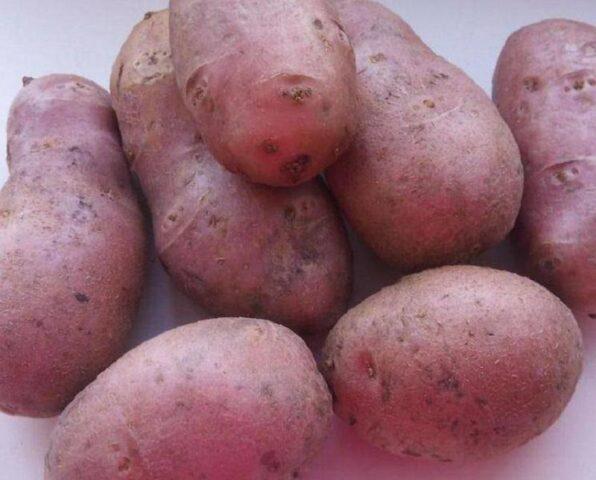
Scarlett is one of the potato varieties resistant to nematode
Conclusion
The potato nematode is very dangerous, so if signs of the pest are detected, you should begin to destroy it.It is necessary to combat worms in a comprehensive manner, using chemical, biological and folk remedies, as well as agrotechnical methods.
